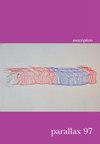Reaction Images and Metawitnessing
IF 0.1
4区 社会学
Q4 CULTURAL STUDIES
引用次数: 6
Abstract
No matter what the event that occurs in the public life of today’s networked and mediatized societies, social media reactions to its witnessing have become crucial in assessing their significance and circulation through economies of attention and, accordingly, their affective dynamics. In many ways, images have become the currency of attention and affectivity in online communication. From emojis to photographs and from GIFs to videos, communicating with images is now more popular than ever. An average of around 500 hours of video material are uploaded on YouTube every minute. On Facebook alone, about 4000 photos are posted every second, amounting to about 350 million photos a day. As Wolfgang Ullrich and Andr e Gunthert have both noted, images have attained a speech-like quality within digital cultures, one more closely associated with orality. Crucial to this communicative function is the emergence of images that are not simply shared, but used as a response by depicting reactions of groups or individuals. These ‘reaction images’, as I will call them, convey experiences, attitudes and emotions that build connections with others through affective feedback loops. Posting the ‘Michael Jackson eating popcorn’ GIF to indicate how much you are enjoying watching a video someone just shared, or recording a reaction video while watching this video for the very first time and circulating this as an immediate response to it – these are varieties of showing and communicating reactions to something seen or witnessed online.反应图像和元见证
在当今网络化和媒体化的社会中,无论在公共生活中发生什么事件,社交媒体对其见证的反应,对于评估其重要性和在注意力经济中的流通,以及相应的情感动态,都变得至关重要。在许多方面,图像已经成为在线交流中注意力和情感的货币。从表情符号到照片,从动图到视频,用图片交流比以往任何时候都更受欢迎。平均每分钟有500个小时的视频上传至YouTube。仅在Facebook上,每秒就有大约4000张照片被发布,相当于每天约有3.5亿张照片被发布。正如沃尔夫冈·乌尔里希(Wolfgang Ullrich)和安德烈·冈瑟特(Andr e Gunthert)都指出的那样,在数字文化中,图像已经达到了一种类似于言语的品质,一种与口语更密切相关的品质。对这种交流功能至关重要的是图像的出现,这些图像不是简单地共享,而是通过描绘群体或个人的反应来作为一种回应。我称之为“反应图像”,它们传达了经验、态度和情感,通过情感反馈循环与他人建立联系。上传“迈克尔·杰克逊吃爆米花”的动图来表示你有多喜欢看别人刚刚分享的视频,或者在第一次看这个视频时录制一个反应视频,并将其作为即时反应传播出去——这些都是对在线看到或目睹的事情的各种表现和交流反应。
本文章由计算机程序翻译,如有差异,请以英文原文为准。
求助全文
约1分钟内获得全文
求助全文
来源期刊

Parallax
Multiple-
CiteScore
0.50
自引率
0.00%
发文量
0
期刊介绍:
Founded in 1995, parallax has established an international reputation for bringing together outstanding new work in cultural studies, critical theory and philosophy. parallax publishes themed issues that aim to provoke exploratory, interdisciplinary thinking and response. Each issue of parallax provides a forum for a wide spectrum of perspectives on a topical question or concern. parallax will be of interest to those working in cultural studies, critical theory, cultural history, philosophy, gender studies, queer theory, post-colonial theory, English and comparative literature, aesthetics, art history and visual cultures.
 求助内容:
求助内容: 应助结果提醒方式:
应助结果提醒方式:


